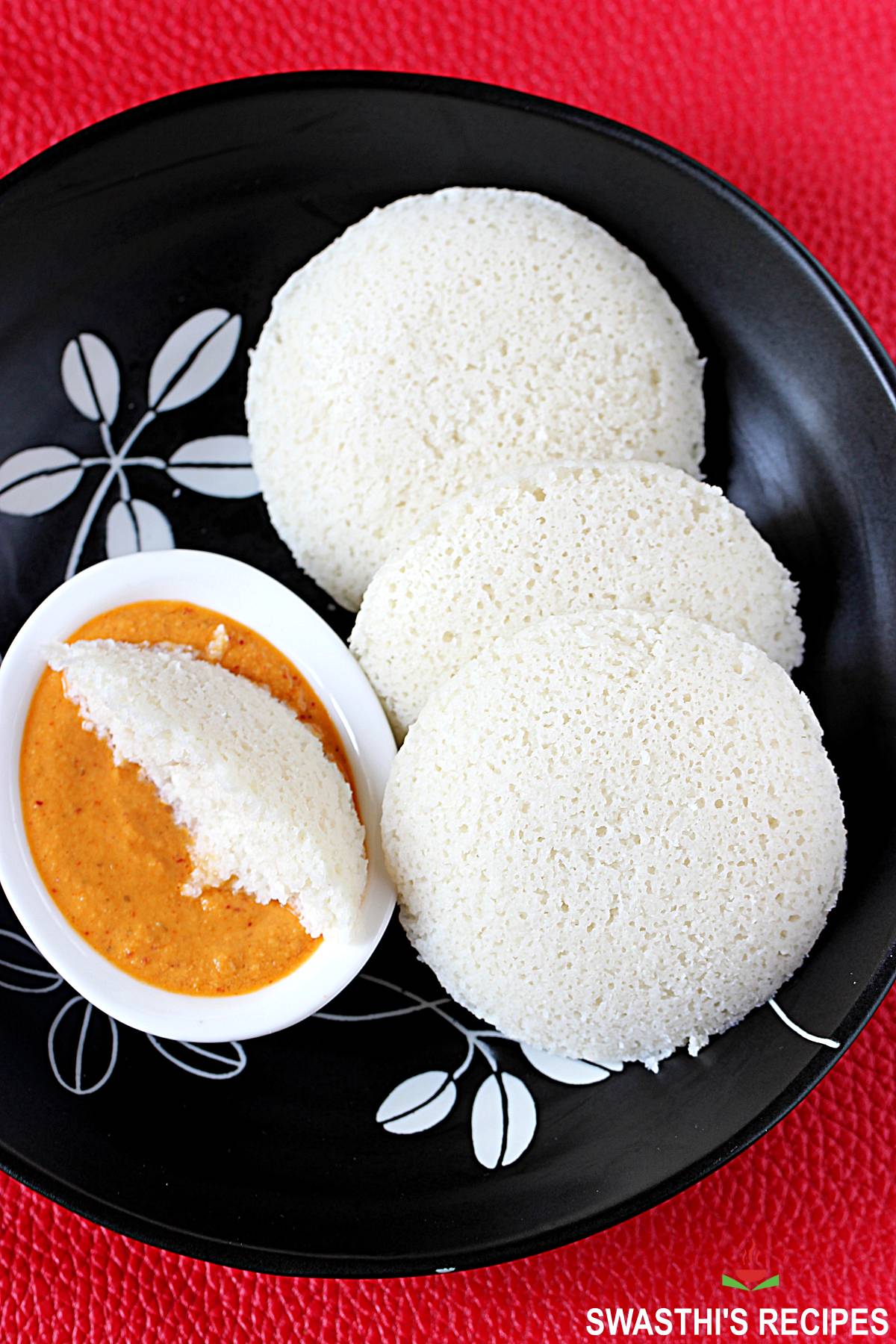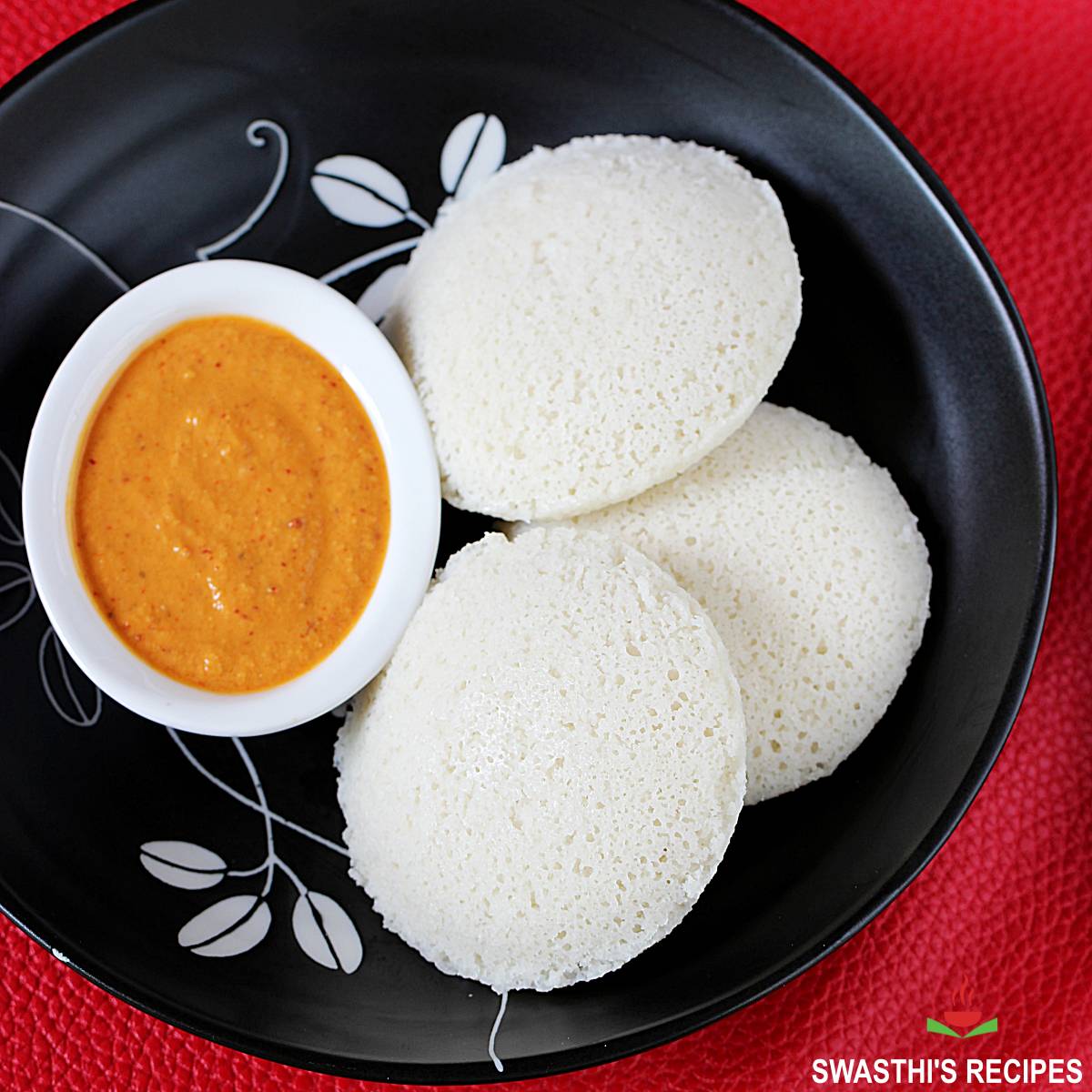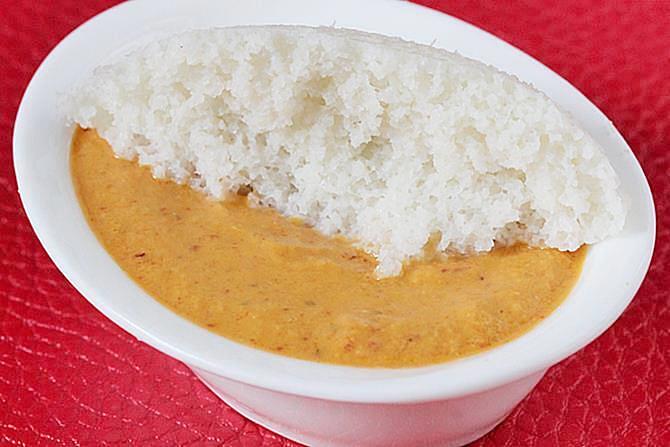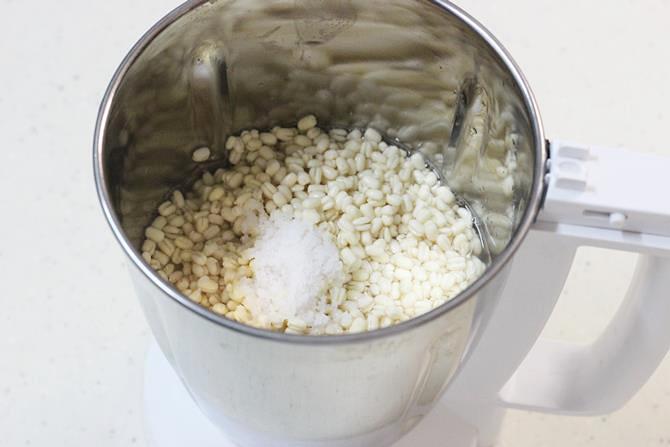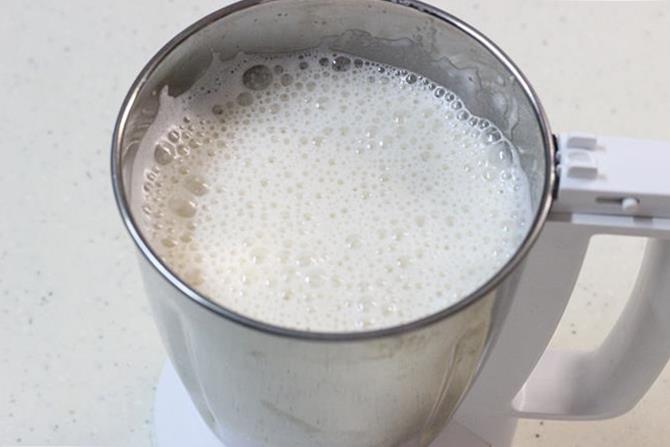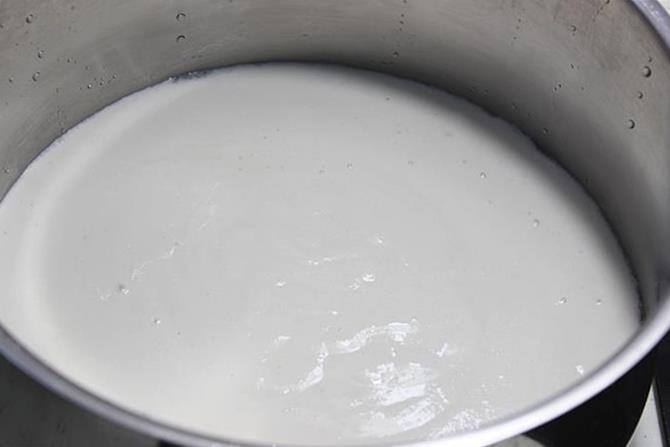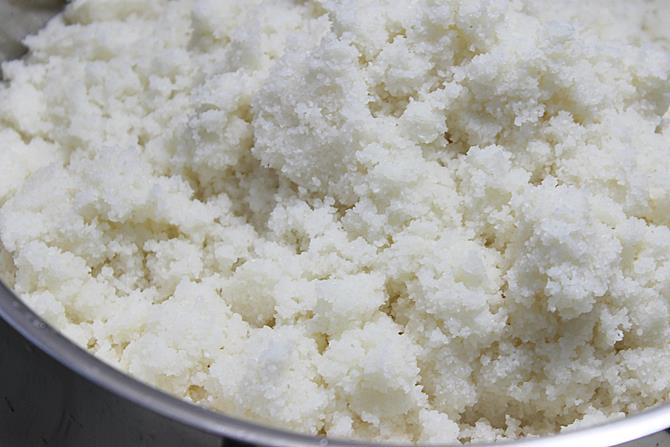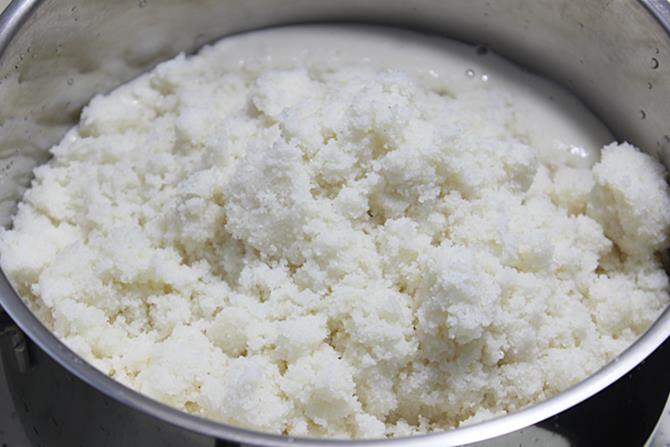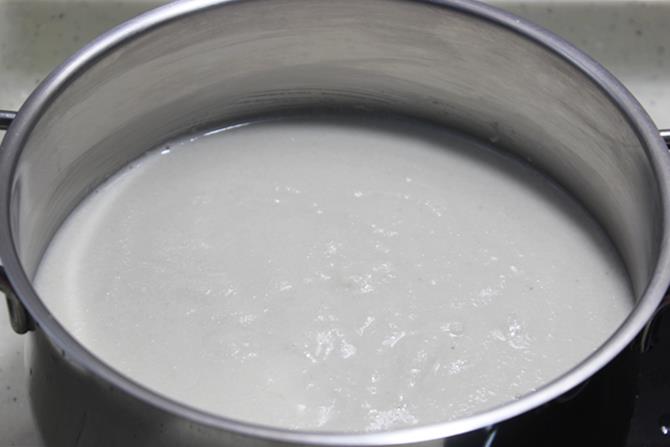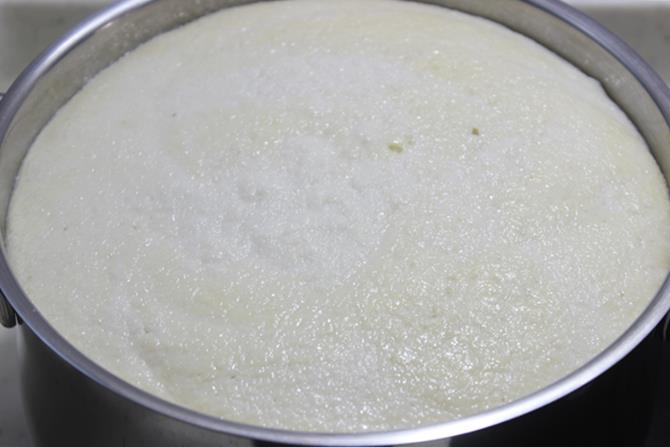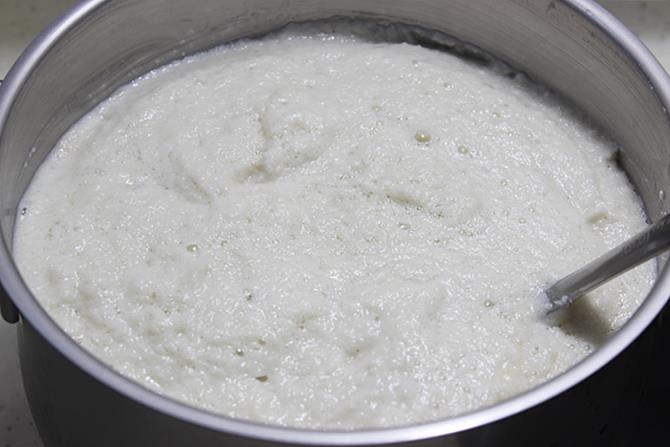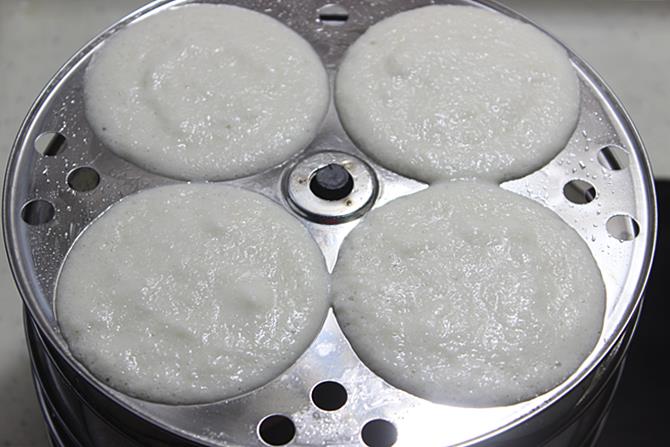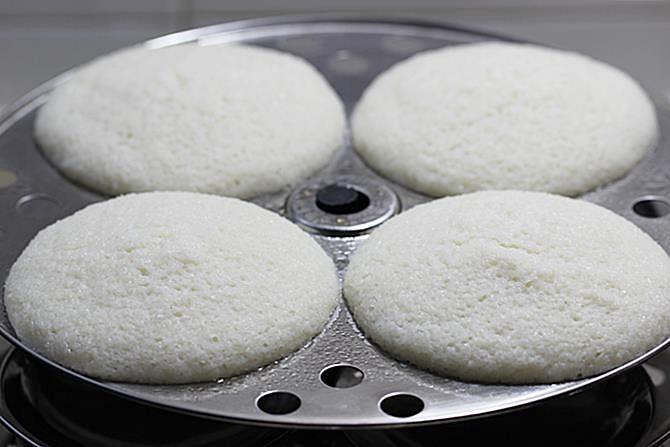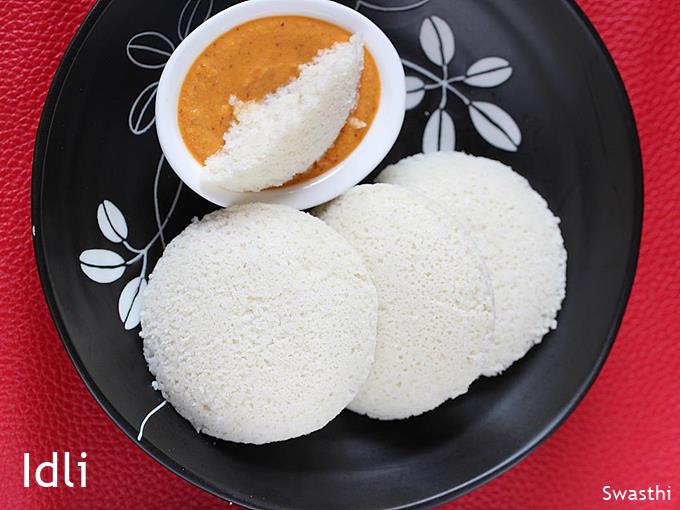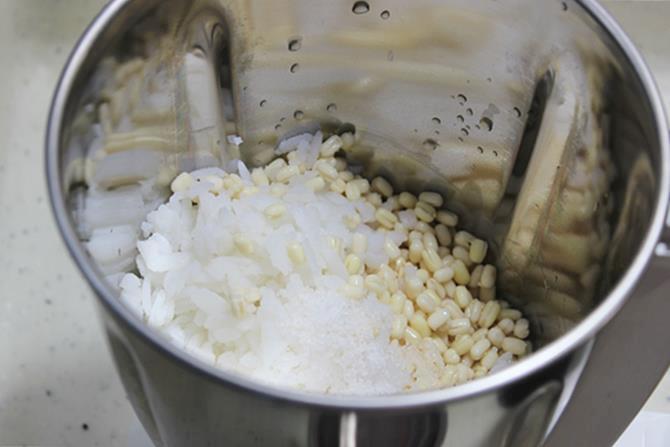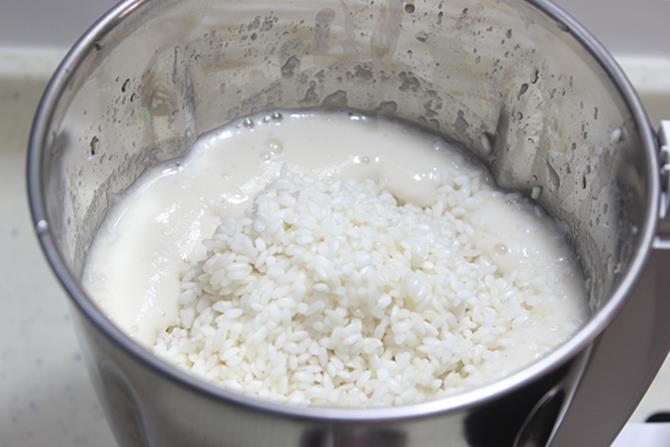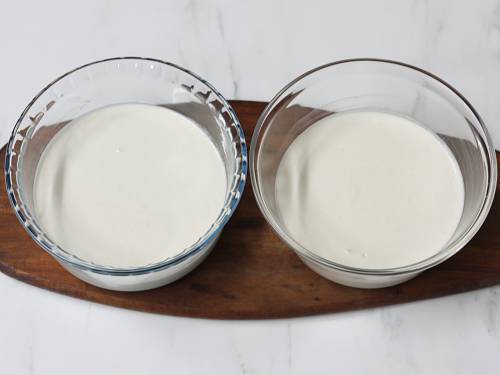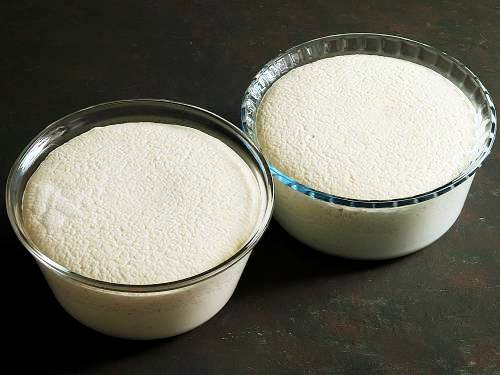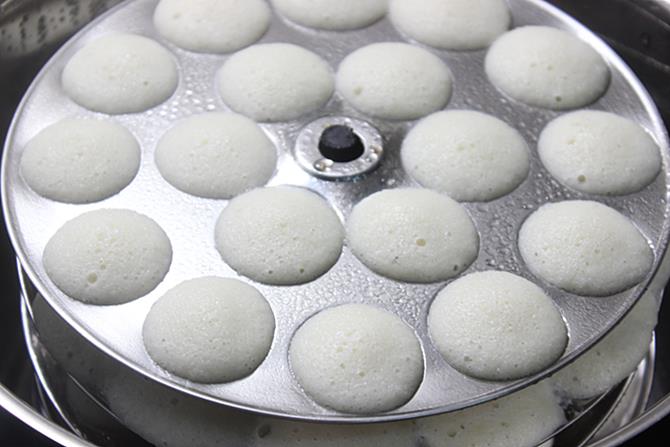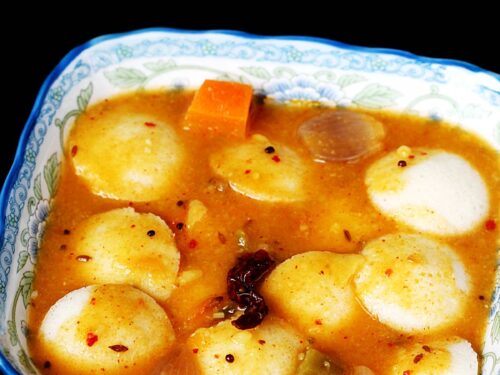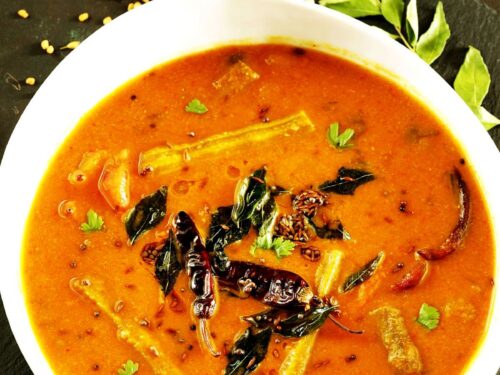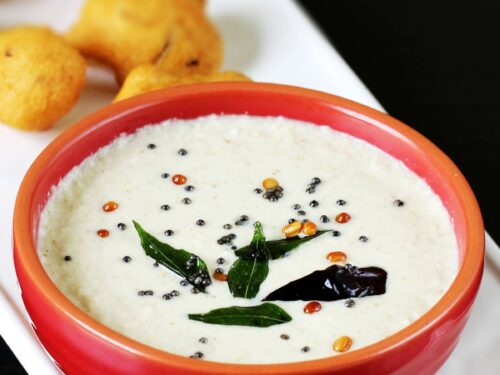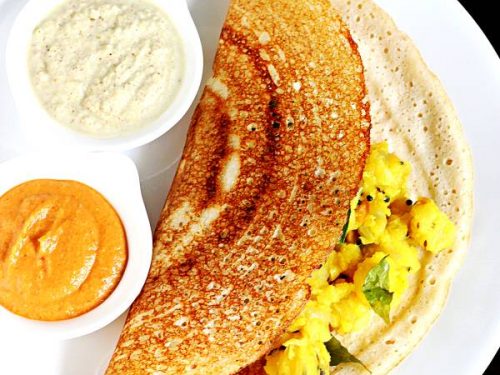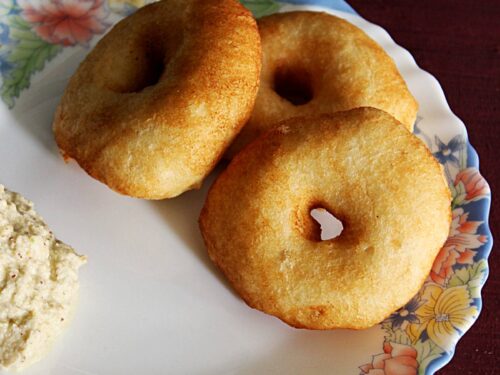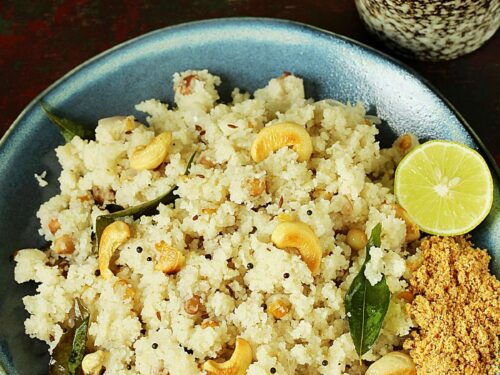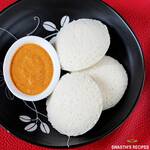Making idli using rava is a breeze, we don’t need to grind the rice to make the batter. The texture of the idly made using rava also turn out very soft and nice.
About Idli
Idli is a soft & fluffy steamed cake made of fermented rice & lentil batter. These are one of the healthiest protein packed Breakfasts from South Indian cuisine. Idli are easily digestible as the rice & lentils known as DAL are soaked, ground, fermented & then prepared by steaming the batter. These are served with a chutney and or with a tiffin sambar. Is idli healthy? Idli is considered to be the healthiest food due to the unique method of preparation which enhances the bioavailability of the nutrients in urad dal and rice. Soaking the lentils, blending to batter and fermenting enhances the nutrients and they are still preserved as idli are steam cooked for a short time. This is what makes idly suitable to all including babies to people on diet and even to the aged, who generally have poor digestion. If you are wondering what is idli made of ? Idli is made with urad dal ( skinned black gram) and rice. Urad dal is high in protein and calcium. It is absorbed by the body better in the form of idly as it is made from soaked & fermented batter. How to make healthy idli? Restaurants or Hotels use a ratio of almost 1:4 (dal : rava or rice, as rice is cheaper for them). So I suppose we must favor more dal as it is high in protein and less rice or rava specially for home cooking. Since the cost doesn’t matter for home cooked foods as long as they are healthy and nutritious.
My Idli Recipe
This idli recipe does not need too much of rice or rava, yet you can make super white, soft, light and fluffy idlis every time. When it comes to fermenting, dal contributes more towards the fermentation rather than the rice. So using lesser rava or rice too you can make super soft idly. To make them healthier use lesser rice and more dal. My idli recipe doesn’t call for using cooked rice. So it is the same traditional recipe which has been followed for generations in South India – to soak the grains, blend, and then ferment the batter. Lastly steam cook for health benefits.
Process of Making Idli Batter
There are 2 ways idli batter can be made
- The first method uses idli rava which is made of a special kind of parboiled rice. This method is very popular in the south Indian states where the idli rava is available. Making idlis using this method is super quick as the rice need not be ground.
- The second method is a traditional one which uses idli rice or parboiled rice. However they can be made with most kinds of rice including sona masuri, ponni or parmal rice.
How is Idli Batter Ground?
Traditionally idli batter was ground in a stone mortar pestle to make the urad dal batter very light and fluffy. This light fluffy batter is the key to soft, fluffy and pillowy idlis. In the current days, it is made either in a wet grinder or blender. Wet grinder works as good as a stone mortar in grinding the urad dal to a smooth and fluffy texture. If it is made in wet grinder then ingredients like poha or methi seeds can be skipped. Most people prefer making batter in a blender as it is easy to handle. If the batter is made in blender then poha or methi seeds will be helpful to make fluffy idlis.
Blender vs Wet Grinder for Batter
As per my experience both yield the same results if good quality dal is used & blended following the correct method. I do have a wet grinder & blender. I use the wet grinder only when I have guests home from India. During other times I use the regular blender. Making idli batter in wet grinder is good for larger families – like 5 or more. Otherwise it is quite easy to manage with a blender.
4 Important Factors to Make Soft Idli Batter
(Based on my experience), no matter whether you use a wet grinder or a blender.
- Age of the dal: Urad dal from the current year’s harvest is best suitable to make soft idli. But how do we identify? The current year’s yield will be white in color with no pale yellow shades on it. While the yield from the previous years, will be pale yellow in color. Or sometimes pale yellow spots on the dal. Using the new dal will surely result in good fermentation. This gives you super soft idly provided you take care of the other 3 factors. For those who are not accessible to fresh stock, other ingredients like fenugreek seeds or poha are used to aid the fermentation.
- Non-iodized salt: always use enough non iodized salt, avoid iodized salts since it do not favor the fermentation process.
- Temperature to ferment batter: Cold climates do not favor fermentation process. So keep your batter in a warm place. If you live in cold countries, use a preheated oven for fermenting it. Or turn on the light in the oven. You can also use the fermentation or yogurt making option in your oven, electric cooker or Instant pot.
- Lastly consistency of idli batter (the amount of water to use): For good fermentation, the batter must be of the right consistency. If you make it runny or thin, it will not rise. But the fermentation will be ok, though not perfect. The result will be wet and flat idly. But again, if your batter is too thick batter, it will not ferment. I understand this as “the organisms need enough moisture for a healthy cultivation”. So blending it to a right consistency is important. So the soft idli batter must be of a thick but pouring consistency.
Tips to Ferment Batter
Temperature: Warm temperatures between 25 to 32 C (80 to 90F) are ideal for fermentation & it takes about 8 to 12 hours. A higher temperature is just fine and will ferment the idli batter much faster. So you need to watch and move it to the refrigerator once it doubles & before it turns too sour. Soaking time: Batter won’t ferment quickly at lower temperatures. So basically you need to play with the soaking and fermentation times to check what works during winter and summers. Longer soaking time helps in activation of wild yeast. So soak the rice and dal for longer during cold days. Dechlorinated water: Avoid chlorinated water to soak and even to blend. Chlorinated water kills the yeast and hinders fermentation process. So use dechlorinated water. Use google search to find ways to dechlorinate water easily.
Fermentation During Winters
Avoid over rinsing soaked rice and dal as it removes the wild yeast completely. We need this wild yeast to assist fermentation. For better fermentation use the same water in which you soaked your urad dal. But avoid during summer as it leaves a wired & sour smell in the batter. Speaking of the idli dosa batter, when to add salt – before fermentation or after fermentation is one of the most debated topic. So try and check out what works for you. I add salt before fermentation throughout the year. My mom always adds powdered rock salt after fermentation during summers and before fermentation during winters. What kind of salt to use? Avoid using table salt or any salt that has added iodine and anticaking agents as they both hinder the fermentation. You can use sea salt, rock salt or pink Himalayan salt that do not have any anticaking agents added to them.
Create a warm atmosphere for the batter
If using microwave convection oven, use your yogurt settings. You can also use Instant pot with the yogurt settings ON (low). I have more details below. For OTG, Preheat the oven to lowest such as 60 to 80 C or 140 to 175F for 10 mins. Wait for 5 to 7 mins so the temperature comes down a bit. Then place the idli batter inside. Avoid keeping batter in a very hot oven, this will kill the existing yeast in the batter and won’t ferment. For regular traditional/gas oven, turn on the light. You may like other South Indian recipes,DosaMasala dosaUpmaUttapamPaniyaram
How to Make Soft Idli (Stepwise Photos)
- Prepare the following:
Add ½ cup dal to a bowl and wash few times until water is clear. Pour fresh water and soak for about 6 hoursIf using fenugreek seeds, soak ½ tsp teaspoon seeds with dal. or soak 2 tablespoons poha, 30 mins before blending.Add 1 cup idli rice or 1 cup + 2 tablespoons idly rava to another large bowl. Rinse a few times until water runs clear. Drain the water and soak it. If using rava, nicely squeeze the rava and rinse to get rid of the unwanted stuff.
Making Batter
- After 6 hours, drain off the water from the dal and add it to the blender along with salt. If you live in a hot place, then skip adding salt now and add it after fermentation, just before making idli. Add 3/4 cup cold water & blend it to smooth. Using cold water prevents the blender or grinder from turning hot. If the batter turns up hot, idli may turn hard.
- Pour 2 to 4 tbsps more water if needed and blend till you get frothy thick smooth batter. Do not make it very runny.
- Transfer this batter to a large pot or bowl.
- If using rice refer method 2 with detailed step by step photos below. A short description is here as well. Add rice and water to the blender and grind coarsely. Pour it to the batter and mix well. Follow from step 6. If using idly rava: Squeeze off the water by taking rava in between your palms and with pressure try to remove excess water. Transfer this to a plate. Squeeze again any excess water.
- Next transfer it to the batter. If you are some one who do not like the slight coarse texture of rava, then you can also blend it well. Then add to the urad batter.
Fermenting Idli Batter
- Mix well with your hands. Keep it aside for fermenting in a warm place for 6 to 12 hours, depending on the climate. It may take up to 18 to 20 hours too sometimes. Do not use air tight jars or containers for fermentation. If you live in a cold country, you can place it in the oven with the light bulb ON. Or preheat the oven to 120 F or 50 C for 10 to 12 mins. Keep the loosely covered batter bowl inside. Or If you have a instant pot or microwave (with yogurt function), then you can also turn it ON with the yogurt setting (low) for 6 to 12 hours or until the batter doubles. You have to experiment to know the exact fermentation time.
- After fermentation the batter has to double and turn light, fluffy and bubbly. This time when I made this I had to ferment for about 18 hours as the climate was windy and cold.
- Gently mix the batter, very lightly to make it uniform. Sometimes after steaming, idlis will rise and collapse due to the aeration in the batter. So it is ideal to give a gentle stir once. This will also bring the batter to a uniform consistency. I prefer to stir gently only 1 to 2 times. It may shrink when we do this.
Steaming Idlis
- Bring water to boil in a steamer or pressure cooker without weight on a medium high flame. Grease the idly plates. If needed sprinkle little water. The batter should be of thick pouring consistency. Pour it in the molds.
- When the water begins to bubble up rapidly, place the idly stand in the steamer. Steam it for 10 minutes. Remember you need to be a bit tricky to adjust the flame. If the flame is very high, the water may bounce to the idly plates. If it is to low, they may not get steamed enough. So the flame should be on a medium high. Off the stove after 10 minutes. Leave it for 2 minutes. Remove the plates from the steamer and allow them to cool for 2 to 3 minutes.
- Loosen the idli from the plates with the help of a spoon and then remove them to a plate. Add some ghee and serve with coriander coconut chutney or peanut chutney. You can also find a collection of 33 South Indian Style chutney recipes.
What to Serve With Idli?
Idly is mostly eaten with a variety of chutneys & a variety of sambar. Here are some popular chutneys that are served Tomato chutney Coconut chutney Pudina chutney Ginger chutney We also eat Idli for a meal sometimes, most often it is for dinner. Then I prepare some kind of sambar along with some mini idlis for my kids. Here are some sambar options you may like to check. Idli sambar or tiffin sambar Vegetable sambar Drumstick sambar
Method 2 – Idli Using Rice
The step by step photos shown below were made with half cup urad dal and 1 cup rice with 2 tbsp poha using recipe 1
- Blend soaked dal,salt and poha adding water as needed until thick and frothy.
- Grind rice until smooth or coarse to suit your liking. Add water as needed. Batter must be neither too thick nor too thin.
- Next transfer to a pot. Set aside until fermented. The time it takes depends on the climate. I doubled the recipe 1 and made this. So I had to transfer the idli batter to 2 bowls.
- After 14 hours, the batter fermented, doubled in volume and had a bubbly texture. Give a gentle stir only twice.
- Lastly I greased the plates and poured the it in the plates. Steamed for exactly 6 to 7 minutes in the bubbling steamer. Since i made mini idli steamed for just 6 to 7 minutes else they has to be steamed for 10 minutes. Mini idli go well with idli sambar.
Faqs
Can You Refrigerate Idli Batter?
Yes. It can be refrigerated for 1 to 2 days. After grinding, it must be transferred to separate containers. Then fermented separately. Next refrigerated after fermentation without disturbing it. I usually make the idli batter good enough for 2 days. Then transfer it to 2 different containers and ferment them separately. Use up one the next morning and refrigerate the other as it is without stirring it. For the second day, I use a glass or ceramic bowl. Plastic or steel containers may make it sour. My idli turns out soft with no sour smell even on the subsequent days. On the third day, I am left with some batter that is not enough for all of us. So I mix up ragi flour in luke warm water and add it to the left over batter. I allow it to rest for 30 mins out of the fridge. Even these turn out good.
How to Make Idli in Instant Pot
For fermentation, place a trivet inside the steel insert of your Instant pot. Then keep the idli batter bowl on the trivet and cover the IP with a plate and not with the lid. Ensure your pot is not too hot from your earlier cooking otherwise your batter will have the flavour of cooked urad dal. Press the yogurt button (set to low) and the timer to 8 to 16 hours depending on your weather conditions. To steam the idlis in your IP, pour 1.5 cups water to your steel insert and bring the water to a rolling boil on a saute mode. Meanwhile, fill the idli moulds. When the water begins to boil, place the stand in the IP. Cover it with the lid and position the steam vent to venting mode. Press the steam button and steam them for 10 mins. Related Recipes
Recipe Card
This Idli Recipe was first Published in January 2013, Updated in January 2022.
